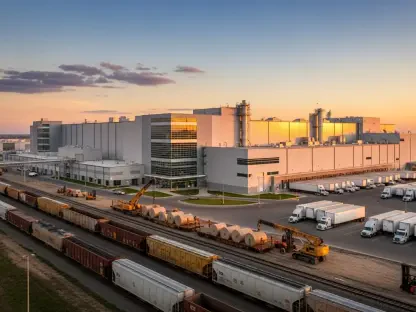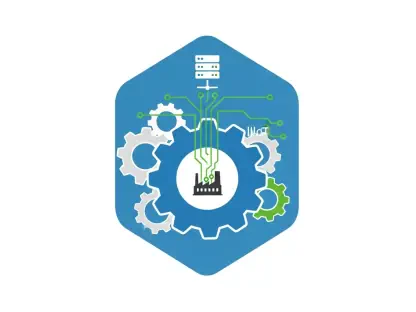In the fast-paced world of food manufacturing, where a single labeling error can lead to costly recalls or regulatory penalties, the industry faces mounting pressure to meet stringent FDA requirements while satisfying consumer demand for transparency. Imagine a production line grinding to a halt due to outdated manual processes unable to keep up with new nutrition disclosure rules, a scenario that is becoming all too common as regulations evolve, pushing companies to seek innovative solutions. Today, automation stands at the forefront of this transformation, offering a lifeline to food and beverage manufacturers striving to maintain compliance and consumer trust in an increasingly complex regulatory landscape.
The Landscape of FDA Food Labeling Compliance Today
The food and beverage industry operates under intense scrutiny to adhere to FDA labeling mandates, which dictate everything from ingredient declarations to nutrition facts. These regulations are not merely guidelines but critical standards that protect public health and ensure accurate product information. Noncompliance can result in severe consequences, including fines, product recalls, and damage to brand reputation, making adherence a top priority for manufacturers across the sector.
Consumer trust hinges on the accuracy and clarity of food labels, as shoppers increasingly demand transparency about what they consume. This expectation aligns with regulatory demands, creating a dual challenge for companies to balance compliance with market needs. Key players in this space, including large food manufacturers and specialized technology providers, are stepping up to address these issues by leveraging advanced tools to streamline labeling processes.
Technological advancements, particularly in automation, have begun to reshape how labeling is managed, offering solutions that enhance precision and efficiency. Recent FDA updates, such as the redefined criteria for “healthy” claims and proposed front-of-package (FOP) labeling rules, underscore the urgency for modern systems. These changes signal a shift toward stricter oversight, pushing the industry to adopt innovative approaches to stay ahead of compliance demands.
The Role of Automation in Transforming Labeling Processes
Emerging Trends in Automated Labeling Solutions
Automation has emerged as a pivotal trend in the food industry, with print automation gaining traction as a means to overhaul traditional labeling methods. By replacing manual tasks with streamlined, technology-driven processes, companies can achieve faster label production and reduce human error. This shift is particularly vital as regulations become more intricate and consumer expectations for detailed information grow.
The drive toward automation is fueled by the need for speed, accuracy, and scalability in labeling operations. Automated systems enable real-time updates to label templates when regulations change, ensuring consistency across all products without disrupting production. This capability not only addresses compliance challenges but also meets the rising call for transparency by providing clear, reliable information to consumers.
Beyond meeting immediate needs, automation opens new opportunities for manufacturers to optimize their operations. By integrating labeling systems with existing business software, companies can minimize downtime and enhance workflow efficiency. This trend reflects a broader move toward digital transformation, positioning forward-thinking firms to gain a competitive edge through technology adoption.
Impact and Growth Potential of Automation in Compliance
Market data reveals a significant uptick in the adoption of automated labeling systems, with many food manufacturers recognizing their value in maintaining compliance. Studies suggest that the use of such systems could see substantial growth over the next five to ten years, driven by the increasing complexity of FDA rules and the push for operational efficiency. This trajectory points to automation as a cornerstone of modern food labeling strategies.
A notable example of success comes from Dot Foods, a leading food redistributor in North America, which achieved a remarkable 99% labeling accuracy after implementing automated solutions. This improvement not only ensured compliance with internal and regulatory standards but also facilitated seamless printing across numerous distribution centers. Such case studies highlight the tangible benefits of embracing automation.
Looking ahead, automation offers a way to future-proof businesses against unpredictable regulatory shifts. As the FDA continues to refine its guidelines, automated systems provide the flexibility to adapt swiftly, minimizing risks of noncompliance. Projections indicate that investment in these technologies will become a standard practice, ensuring long-term resilience in a dynamic industry environment.
Challenges in Adopting Automation for FDA Compliance
Adopting automated labeling systems is not without hurdles, with initial costs posing a significant barrier for many food manufacturers. The upfront investment in hardware, software, and integration can be substantial, particularly for smaller firms with limited budgets. This financial challenge often delays the transition to more efficient processes despite the long-term savings automation can deliver.
Technological complexities also present obstacles, as compatibility issues between new automated systems and existing infrastructure can disrupt implementation. Integrating these solutions requires careful planning to avoid operational hiccups, especially in facilities reliant on legacy equipment. Addressing these concerns demands a strategic approach to ensure seamless adoption without compromising production timelines.
Workforce adaptation further complicates the shift to automation, as employees may require extensive training to operate new systems effectively. Resistance to change or lack of technical expertise can slow progress, necessitating comprehensive support programs. Overcoming these barriers involves partnering with dependable labeling providers and conducting thorough system audits to identify and resolve potential issues early on.
Navigating the FDA’s Regulatory Framework with Automation
The FDA’s recent updates to labeling regulations, including the redefined “healthy” claim criteria effective this year with compliance deadlines in the coming years, set new standards for food manufacturers. Additionally, the proposed front-of-package “Nutrition Info box” aims to highlight nutrient levels, potentially reshaping how products are presented to consumers. These changes emphasize the need for precise labeling to meet limits on saturated fat, sodium, and added sugars.
Automated systems play a crucial role in aligning with these mandates by enabling accurate data management and real-time updates to labels. They ensure compliance with nutrient thresholds by pulling information directly from integrated business systems, reducing the likelihood of errors. This precision is vital for maintaining regulatory adherence while avoiding penalties or consumer backlash due to misleading claims.
Moreover, automation enhances traceability by embedding variable data such as lot numbers and expiration dates into labels without manual input. In the event of a recall, these systems provide robust documentation, allowing swift identification of affected products. By minimizing noncompliance risks and strengthening record-keeping, automation proves indispensable in navigating the FDA’s evolving framework.
The Future of Food Labeling with Automation
Looking toward the horizon, automation is poised to further redefine food labeling compliance through continuous innovation. Emerging technologies like low-code integration and centralized print management are expected to simplify system updates and enhance control over labeling processes. These advancements promise to make compliance more accessible, even for companies with limited technical resources.
Consumer preferences will continue to drive the demand for transparent and accurate labeling, pushing manufacturers to adopt solutions that deliver detailed product information. Automation supports this trend by ensuring labels reflect the latest data, fostering trust among shoppers. As expectations evolve, automated systems will be key to meeting market demands without sacrificing efficiency.
Potential disruptors, such as additional FDA regulatory changes or global supply chain fluctuations, could influence the trajectory of labeling practices. However, the scalability and adaptability of automated systems position them as a reliable solution for addressing unforeseen challenges. Their ability to grow with business needs and adjust to new requirements underscores their importance for sustained success in the industry.
Conclusion: Embracing Automation for a Compliant Future
Reflecting on the transformative journey of food labeling, it becomes evident that automation has reshaped compliance by boosting speed, accuracy, and efficiency for countless manufacturers. This technological shift delivers benefits far beyond regulatory adherence, including improved return on investment, streamlined user experiences, and reduced IT maintenance burdens. These outcomes highlight the profound impact of adopting modern solutions in a demanding sector.
As a next step, food manufacturers are encouraged to audit their existing labeling environments to pinpoint inefficiencies and areas for improvement. Collaborating with trusted labeling providers offers a pathway to tailor automation solutions to specific needs, ensuring a smooth transition. Investing in these systems emerges as a strategic move to stay ahead of both regulatory changes and market expectations.
Ultimately, the outlook for companies that embrace automation proves promising, positioning them to navigate future challenges with confidence. By prioritizing scalability and innovation, businesses can build resilience against evolving demands. This proactive stance not only safeguards compliance but also paves the way for sustained growth in an ever-changing industry landscape.









